NSF Awards: 1934126
This video showcases a project titled Making Sense of Models: Investigating Mechanistic Reasoning as a Bridge for Connecting 6th Grade Mathematics and Science Learning. The project aims to develop and implement a multidisciplinary CT program that uses computer modeling activities as a bridge to connect regular school day mathematics and science learning. Sixth grade students and their teachers in three districts are engaging in decoding or reading the code of pre-built models in math class and then modifying the same code in the context of a scientific phenomenon in science class. The research objectives of the project are to engage in design-based research to develop a math and science CT curriculum for 6th grade students; develop, test and refine a year-long teacher professional development program that supports teacher learning and implementation of the integrated curriculum; and conduct a mixed-methods study on the impact of the integrated curriculum on student learning, teacher and student perception of math and CT, and the role of mechanistic reasoning in CT. In the video, we share initial findings from our research focusing on student learning.



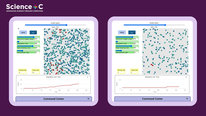
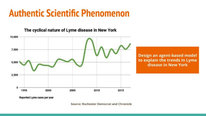
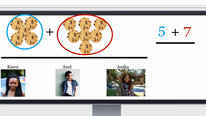
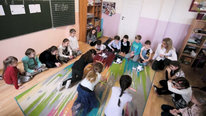
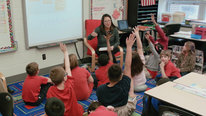
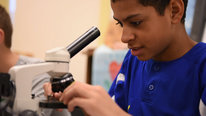
Aditi Wagh
Research Scientist
Andres Colubri
Assistant Professor
Hi Aditi, this is an interesting idea. If I understood it correctly, students are given both a physical phenomenon (i.e.: water filtration) and a computer program describing that phenomenon (btw, are you using scratch?), and they have to arrive to an understanding of how the code does model the phenomenon. Is this correct? So they are not directly engaged with actual coding, it's more like debugging the give program to understand how it works?
Aditi Wagh
Research Scientist
Hello Andres - great question. You are right that one of our goals is for students to reason about or "decode" how the code in a model represents a mathematical or scientific idea. However, our aim is also to have students modify the code in some way to represent a particular math/science idea. We couldn't focus on this in this past year because of the challenges of collaborative coding online. One of our RQs is around investigating relationships between decoding in science class and modifying code in math class as a way to help students bridge math and science learning. So we have been reflecting on how to incorporate more coding in our PD and curriculum for next year. The modeling environment we're using is StarLogo Nova.
Andres Colubri
Assistant Professor
Hi Aditi, thanks for your response to my question. I find the idea of decoding very interesting, as a programmer my self I do it all the time, but haven't thought of its pedagogical potential!
Aditi Wagh
Michael Chang
Postdoctoral Research
Thank you for sharing your work and I appreciate how the idea of decoding blossomed from the challenges associated with collaborative programming during the last year. This reminds me of how the WISE program (web-based inquiry science environment) integrates of computational thinking (not necessarily coding) and science/math concepts (e.g., photosynthesis). One thing I appreciate about the WISE curriculum is that it integrates interactive graphs and figures to enhance student’s understanding (or a type of “decoding”?) of what is happening computationally. Do you think that might serve as an approach towards moving towards the most sophisticated kinds of decoding?
Aditi Wagh
Aditi Wagh
Research Scientist
Hi Michael! That's a great question. We're characterizing "decoding" specifically as interpreting the code to be able to describe the mathematical and scientific abstractions embedded in it. So in the WISE example, we would not describe students interpreting graphs and figures as a type of decoding. But I agree with you that additional representations (including graphs and figures) in the computational model can play a powerful role in enabling students to interpret and read the mathematical/scientific abstractions embedded in the code. They all serve as additional forms of feedback essentially to understand what the code is doing. In our filtration unit, we use "single step runs" to enable students to step through the code one tick at a time to understand how a loop works. In a unit on heat absorption/reflection, we have students interpret a graph of trapped/reflected heat. If you have ideas/leads for how to use multiple representations to support interpretation of code, would love to hear!
Joseph Esquibel
Thanks for sharing your work. This looks like a great way to connect coding to real world problems. If you're looking for an extension problem set after your students go through the water filtration, it looks like modeling a dialysis machine would fit well. Similarly, you need holes in a membrane sized appropriately to allow smaller waste molecules to pass through but prevent larger red blood cells from passing through.
Aditi Wagh
Aditi Wagh
Research Scientist
Hi Joseph - those are great ideas! We're always looking to add new examples to our teacher guide for teachers to have handy when teaching our units. We'll include these ones too. Thanks for stopping by!
Joseph Esquibel
Thanks for sharing your work. This looks like a great way to connect coding to real world problems. If you're looking for an extension problem set after your students go through the water filtration, it looks like modeling a dialysis machine would fit well. Similarly, you need holes in a membrane sized appropriately to allow smaller waste molecules to pass through but prevent larger red blood cells from passing through.
Jeremy Roschelle
Executive Director, Learning Sciences
Hi Aditi, thanks for your video and great to learn about your "decoding" approach. I especially appreciated the researcher-practitioner partnership sensibility of your work, and that you managed to get some data with students even during a pandemic! I am thinking about your question -- (a) who else is doing decoding? Asked this specifically, nothing comes to mind. But more generally, I think you are asking "is anyone exploring how connecting multiple representations helps students to learn mathematics" -- and within that frame, there's a lot of research that could situate and inform your work. I'm a fan of Hiebert's suggestion that what it means to "make sense" of mathematics is to "make connections" especially across representations. In the SimCalc work I did (ask Eric), I came to think of the valuable space for making connections as having two dimensions - visual (simulations) vs. linguistic representations (code) and familiar vs. formal representations. Visual-formal=a graph or a bar representation of ratio | Visual-familiar=a phenomena | Linguistic formal = code | Linguistic familiar = a story or explanation. Really supporting students to make all four types of connections takes time, but I believe it does result in deeper learning. Is this helpful? Is it generative for anything you might do or try?
Aditi Wagh
Aditi Wagh
Research Scientist
Hi Jeremy, good to see you here, and thanks for watching our video! I like the idea of thinking about sense making in math as connecting across representations along the two dimensions you mention. Our RQs are situated around investigating how students come to "see" the mathematical relationships/processes embedded in the linguistic-formal, and I can see how the tools we're using to support them in that work could be described as visual-familiar, linguistic-familiar and even visual-formal.
I do think though that in this project, we're giving special status to the linguistic-formal (code) as a representational form that can support bridging math and science learning. My question to the audience was to ask if others were doing a kind of connecting math+science learning.
I am familiar with the SimCalc work - a lot of the work coming from the Kaput Center really grounded my theoretical and methodological understanding of how to think about and study the role of technologies in learning :)
Jeremy Roschelle
Executive Director, Learning Sciences
Cool to hear that SimCalc was helpful to you. Good luck with this work going forward!
Aditi Wagh